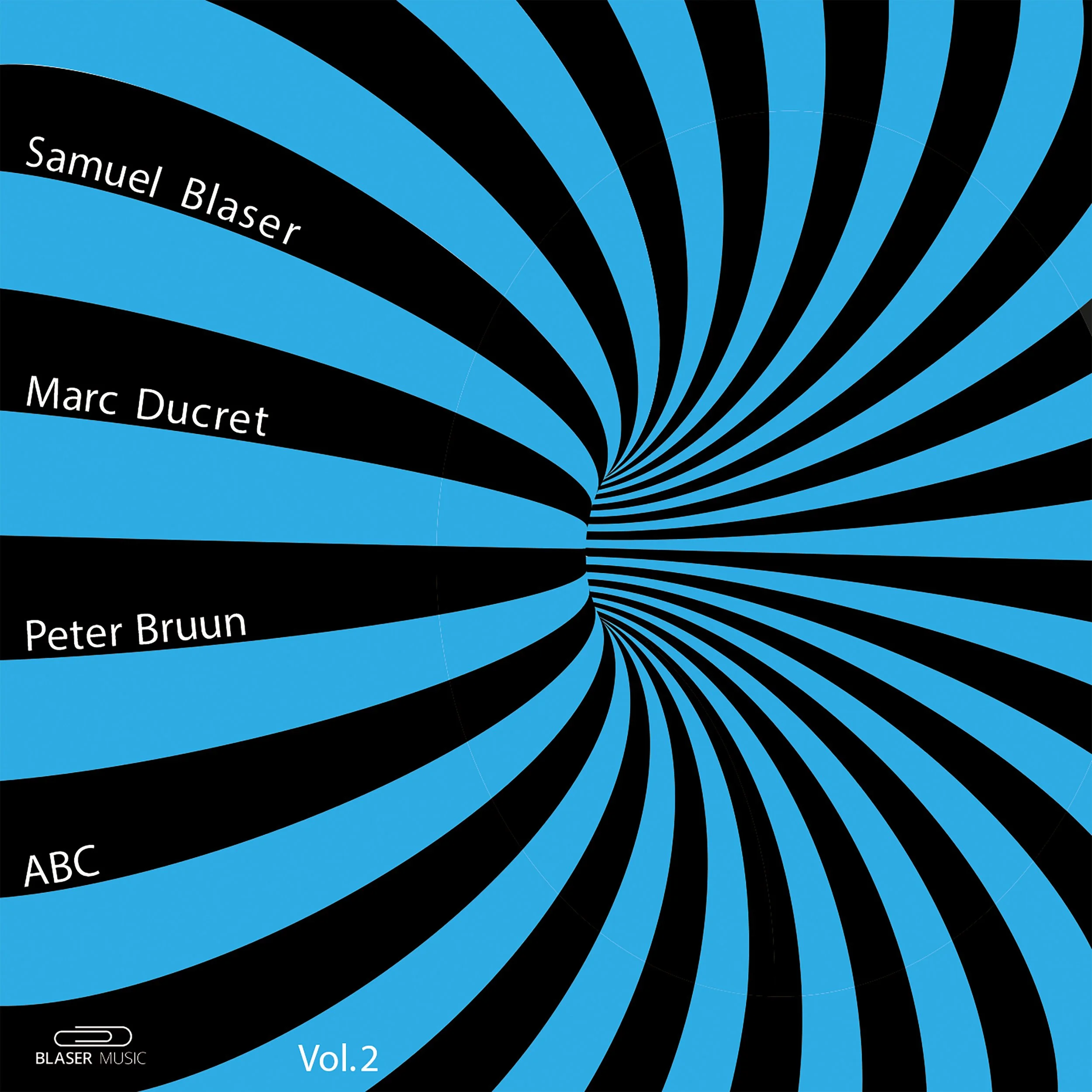SAMUEL BLASER MARC DUCRET PETER BRUUN
ABC Vol. 2
BM004DL
June 26, 2020
SAMUEL BLASER - trombone
MARC DUCRET - guitar
PETER BRUUN - drums
Recorded at Centre de Culture ABC, La Chaux-de-Fonds, Switzerland by Matthieu Metzger, November 2016.
Mixed and mastered by Matthieu Metzger, December 2016
1, 3 and 4 published by Heights Music Publishing
2 and 5 composed by Marc Ducret (SACEM)
graphic design and cover art: Niklaus Troxler
Produced by Samuel Blaser
℗ & © 2020 Blaser Music
“This is a remarkable trio”
ABC Notes Volume 2
You don’t have to look too hard through the recorded history of jazz to see that a stable group can do wonders for a musician’s growth as a composer, improviser, and conceptualist. But a variety of commercial and circumstantial pressures make it devilishly hard to sustain them over the long haul. The reappearance of certain musicians — guitarist Marc Ducret, pianist Russ Lossing, bassists Drew Gress and Bänz Oester, drummers Gerald Cleaver and Gerry Hemingway — throughout trombonist Samuel Blaser’s discography suggest that he is well aware of the benefits of having familiar faces with him when he makes a record.
This trio is not his core recording ensemble. In fact, until he, Ducret, and drummer Peter Bruun checked into the Centre Culturel ABC in November 2016, they were his NON-recording ensemble. For a time, Blaser admits, “I liked the idea of only being able to hear the band in a live setting.” Between 2013 and the 2020 they played around 150 gigs on three continents, booked mostly on the strength of YouTube and Soundcloud links. But eventually the recording industry took interest in the trio. “Werner Uehlinger from Hatology was pushing me to record the trio and submit a master tape for a release.” In 2018, the label issued a set recorded the previous year at the Taktlos Jazz Festival.
While Taktlos Zürich 2017 amply displays Blaser, Bruun, and Ducret’s management of shape and space, they have more to say than one album can contain. There is no overlap between the material on ABC Volume 2 and that of the Hat Hut album, and only two of its five tracks appear anywhere else in Blaser and Ducret’s combined discographies. The guitarist previously recorded “L'ampleur des dégât” with his own trio, and it has been in his and Blaser’s duo sets for years. When they recorded the version heard on Audio Rebel in 2013, they jointly emphasized its bluesy swagger. This time, everyone in the trio gets a chance to redirect the music. Ducret pursues intricate, circuitous variations upon the theme; Blaser slows the music to a crawl and revels in its textural implications; Bruun takes a solo that builds to a rush and then shrinks to near silence. And the trombonist previously recorded the opener, “Mouse,” with another trio, Made In China. But while that group executed the tune’s challenging twists and turns with brisk precision, this one takes nearly half the performance to get to the tune. As befits an ensemble devoted to working things out on stage, they treat the melody as something to be snuck up on, alluded to, and elaborated upon.
The trio also takes its time approaching Ducret’s stately “La vie sans toi.” Its extended prologue of acidic feedback and forlorn, muted cries might be interpreted as a musical speculation on the experience that motivated the guitarist to compose a ballad about loss in the first place. Blaser’s other two originals expose the trio’s facility at navigating formal and emotional changes. “The Beekeeper” begins as an intricate dance between the three players. Then, as Blaser and Ducret trade more forceful scalar ascents, the other two musicians break away, only to reunite after the climber reaches his highest pitch. Their interactions build to a frenzied charge, then return to the opening figures for a few more rounds. “Held” is, at over 18 minutes in length, the album’s longest piece, and for much of that time it is also the quietest. But concealed within its expanse are frantic contrasting sequences; a listener could get lost in its changes, but the musicians never do.
Bill Meyer
